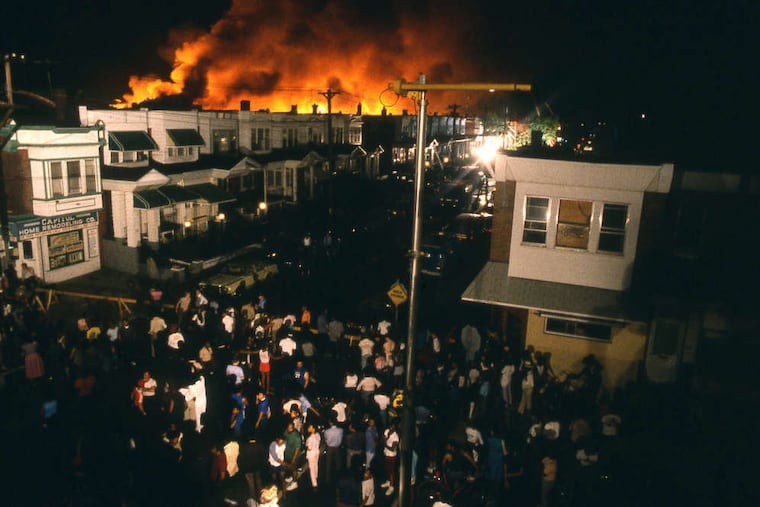35 years ago, Philly dropped a bomb on MOVE. It’s time to apologize. | Editorial
MOVE was not a sympathetic group. But sympathy is not a prerequisite for recognizing injustice.

Former Philadelphia Mayor W. Wilson Goode Sr. has called on the city of Philadelphia — in an op-ed published by the Guardian — to issue a formal apology Wednesday, the 35th anniversary of the day his administration dropped a bomb on a group of citizens. The action claimed the lives of six adults and five children and burned a neighborhood to the ground.
Both Mayor Jim Kenney and City Council President Darrell L. Clarke have so far remained mum on whether they will respond. They may think there are more important things to deal with at a time of a deadly public health crisis. They might think they didn’t participate in the bombing, so why should they apologize? They may wonder what good an apology would do, anyway.
These are fair questions. Still, it is an opportunity for city leaders to acknowledge some hard truths — about how race was at the center of a terrible loss of life and livelihood then, and 35 years later, it remains at the center of a terrible loss of life and livelihood.
On May 13, 1985, the police, after a day-long confrontation with the black radical and naturalist group MOVE, in an attempt to evict their compound on 6221 Osage Ave., dropped an explosive device on the roof of the building. The roof caught fire. Committed to achieving “tactical superiority” to his mission, then-Police Commissioner Gregore J. Sambor told the fire commissioner to let the fire burn. Eleven people, including five children, died, 61 houses burned, and at least 250 people were left homeless.
The vast majority of victims — MOVE and neighbors — were black.
The former mayor is adamant to this day that he was misled and didn’t know about the plan to drop an explosive device on the house, despite conflicting accounts that he approved it.
Heavily armed, and infamous for a confrontation with police in 1978 in which an officer was killed, and a nuisance on the block it occupied, MOVE was not a sympathetic group. But sympathy is not a prerequisite to recognizing injustice.
The bombing isn’t the only part of the MOVE story tainted with systemic racism. Neighbors of MOVE had complained about the commune for years but were ignored by the city. After the bombing, the city rebuilt houses that quickly fell apart, leaving many without decent shelter, and the neighborhood physically scarred.
Today, as poverty continues to choke the city, and Kensington residents ask how long homeless encampments would have been allowed in Rittenhouse Square, and as Benjamin Franklin High School parents whose concerns about asbestos were ignored until whiter, Science Leadership Academy students were exposed, it’s clear that questions of race and class continue to resonate. And long-standing racial health disparities mean that the coronavirus is killing nearly twice as many blacks than whites in Philadelphia.
Mayor Kenney and City Council President Clarke might have not been there on that day in 1985, but they are here today, as heirs to the city’s leadership history — and its future. Acknowledging mistakes is a powerful way to move forward and to demand change — even if those mistakes were made by someone else.